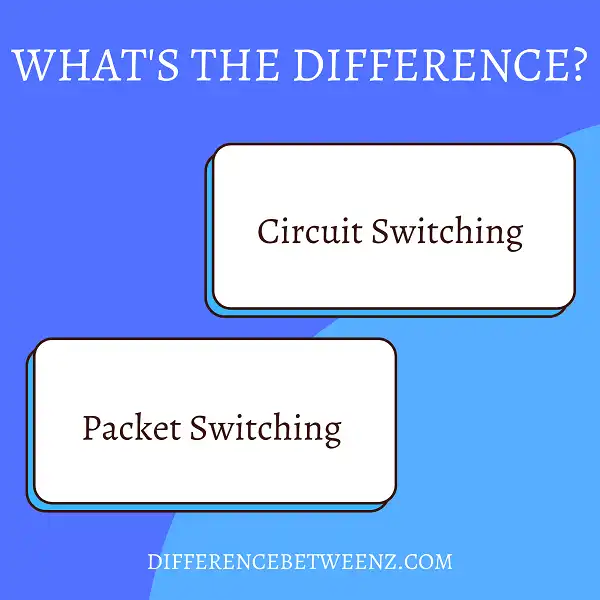Are you curious about the difference between circuit switching and packet switching? In this blog post, we will explore the two different types of switches and discuss the benefits and drawbacks of each. By the end, you should have a good understanding of which type of switch is right for your needs. Let’s get started!
What is Circuit Switching?
Circuit switching is a method of telecommunications wherein a dedicated link is established between two endpoints for the duration of a communication session. The link provides a direct path between the endpoints, and all data sent between them travels along this path. Circuit switching is the traditional method used for voice calls, as it guarantees a constant connection with no data loss. However, it is not well-suited to modern applications such as video streaming and web browsing, which require rapid transmission of small amounts of data. As a result, circuit switching has been largely replaced by packet switching in recent years.
What is Packet Switching?
Packet switching is a method of data transmission in which packets are routed through a network based on their destination address. Packet switching is the primary method used in computer networks, and it is also used in telecommunications networks. Packet switching is a efficient way to transmit data because it reduces the need for dedicated links between devices. Packet switching also allows multiple devices to share a single link, which reduces the amount of bandwidth that is required. Packet switching is a versatile technology that can be used in both small and large networks.
Difference between Circuit Switching and Packet Switching
- Circuit switching and packet switching are two commonly used methods for transmitting data across a network. Circuit switching creates a dedicated connection between two devices, over which data can be transferred in real time. Packet switching, on the other hand, divides data into small packets, which are then routed to their destination through a shared network.
- Both approaches have their advantages and disadvantages. Circuit switching is typically faster and more reliable than packet switching, but it requires more resources and is less flexible.
- Packet switching is more efficient and easier to scale, but it can be slower and less reliable. Ultimately, the best approach depends on the specific needs of the application.
Conclusion
While both circuit switching and packet switching are used to move data around networks, they work differently. Circuit switching establishes a dedicated connection between two points that can’t be shared with any other users, while packet switching breaks up data into small packets that are sent through the network independently. This difference is important when it comes to understanding how your internet works- if you’re trying to troubleshoot why something isn’t working, knowing which type of switch your ISP is using is essential information.


